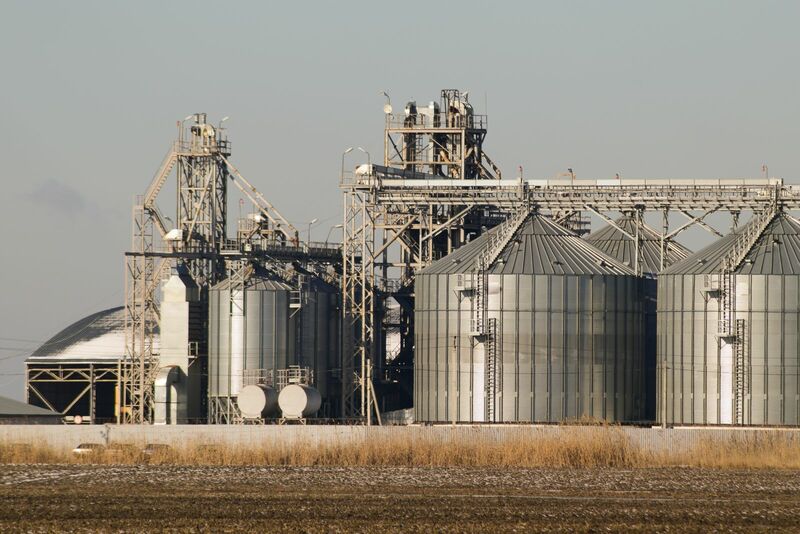
While market analysis is a fun hobby of mine, my actual day job is to help my clients, who are farmers, manage the risks that come with turning their physical bushels into cash.
I always say the farmer is inherently long, meaning that for as long as they intend to plant a crop, they will have bushels to sell. The farmer is exposed to the risks associated with being long the market from the time they agree to purchase the inputs necessary to produce the crop in question. And while there are several ways to manage that risk, with crop insurance, contracting or hedging and other tools, most farmers will tell you marketing grain is the hardest part of growing it.
One of the clearest ways to capture opportunity in the grain and oilseed markets is to have storage. Commercials or grain elevators have made solid margins for years by taking grain in when it is plentiful and therefore cheap, and selling it later when market movement is sparse, and values are stronger.
Farmers have seen this over the years, and listened to market signals, increasing on-farm storage in a big way. Farmers having more storage allows for less grain to move into the market at harvest time with slower movement especially seen in the weeks directly after harvest.
The ability to delay sales or the movement of grain has put some of the power back into the hands of farmers, who once they have shut their bin doors may take more convincing than the local elevator when it comes to incentivizing sales.
Slow farmer selling is a common topic of conversation this year, and one that could have an interesting impact on market dynamics in the weeks and months ahead. The slow pace of farmer selling, especially of corn, around the world should not be surprising, as futures are hovering around 2 year lows and marketing opportunities over the past year have been fleeting.
Farmers by nature are also inherently optimistic, with many looking to capture the better marketing opportunities they see available in the deferred timeframe. Capturing carry is a very hot topic this year, as spreads and basis values, especially in the Eastern Corn Belt, are wider than what we’ve seen over the last couple of years.
It is important to note, and a whole topic for another day, but how commercials approach managing risk and capturing carry on the bushels in their bins and how many farmers manage their risk are two very different approaches. Unless the bushels in their bins are hedged, farmers are open to futures risk in addition to basis and spreads, while commercials/elevators hedge their grain on the inbound, allowing them to ignore futures moves almost entirely.
But back to the topic at hand, the slower pace to farmer selling is generally first noticed in basis, as the reduced flow of grain into the physical pipeline usually results in a firmer tone to values paid. A firmer tone to basis is not only the first step in incentivizing sales, but it is also the first step in testing the depth in demand.
Brazil’s cash corn market is the best example of this right now. The poor start to the country’s growing season and questions over production potential have all but stopped farmer selling of corn. The reduction in grain flow has pushed basis levels higher across the country and given exporters a choice. They can increase the values offered to farmers but doing so will result in a loss, leaving not participating in the trade as their other option.
The Brazilian farmer is thought to have around 77% of their old crop corn, or the bushels produced in the 2022/23 crop year, sold, meaning there are around 1.4 billion bushels of corn left to be sold there before February or it will be carried forward.
While new crop corn production potential is in question with the poor start to the growing season, there seems to be a consensus that we could see around 120 million metric tons produced. Of that production, the Brazilian farmer is said to have around 10% sold, far below the usual 35% sales pace.
Brazil is not the only place seeing a significant uptick in farmer holding, with many estimating the US farmer is only around 25% sold. While this has created some basis strength in parts of the Western Corn Belt, it becomes increasingly concerning when we think about adding that amount of unsold production to the other bushels looking to be turned into cash around the world.
If the US farmer is 25% sold, that means we’re looking at around 11.4 billion bushels of length needing to be marketed over the next several months. Add to those bushels the unpriced length across Europe and South America, and you start to wonder what it will look like when it comes to pricing and moving those bushels into the pipeline.
I will let you do the math yourself—and while yes not all these bushels discussed here are traded on the board—it is crazy to think that if farmer length were a field on the commitment of traders’ report, it would dwarf commercial and fund positions by far.
Farmer positioning will likely be on display this week in a different way, as many are forced to decide between pricing or rolling unpriced bushels by the middle of the week. Many farmers at harvest have a free period after delivery and prior to storage accruing to price their bushels.
Some may have basis contracts written against the December board and are looking at a 19 cent spread to the March that is risking to go wider. When a basis contract is rolled to the next month in a carry market, the spread is subtracted from the original value to account for the change in futures. This means a 20 under the December basis is now a 39 under the March without accounting for fees. Others using storage or delayed pricing instead of basis contracts are looking at eye-watering storage rates of 10 cents a month with many charging minimums or drop fees.
In the end, with the shifting dynamics in the physical market, farmer length and its impact on futures movements will be interesting to watch in the months ahead. It will likely create some interesting opportunities for commercials as well, especially if futures remain flat to weak.
Other things I’m Watching:
- Russia and Ukraine. While things have been mostly status quo the last couple of months, with many talking about a stalemate of sorts, we have seen Russia ramp up attacks on Kyiv over the weekend. We have seen attacks on the rise at ports as well, with Ukrainian President Zelensky again calling on NATO to help with their grain corridor. The worry remains that we see the situation spill over in a way that limits grain flow.
- South American weather. While it looks drier and warmer than normal to finish out the month across much of Brazil, conditions have improved significantly across a large portion of the country. More in the way of rain is expected in the extended forecast, with talk we could see El Nino’s influence dissipate shortly after the New Year.
- Outside market sentiment. Money flow and trader sentiment remain huge drivers to market direction. If the farmer remains disengaged, but funds start to get interested in commodities again, it could get interesting.
As always, don’t hesitate to reach out with any questions. Have a great day!
More Grain News from Barchart
- Corn Falls on the Short Friday Session
- Wheat Falls to New Lows on Friday
- Soybeans Collapse on Short Session Amid Product Selling
- Coffee Prices Settle Mixed on USDA Projections for Stronger Arabica and Weaker Robusta Production
On the date of publication, Angie Setzer did not have (either directly or indirectly) positions in any of the securities mentioned in this article. All information and data in this article is solely for informational purposes. For more information please view the Barchart Disclosure Policy here.






/Oracle%20Corp_%20office%20logo-by%20Mesut%20Dogan%20via%20iStock.jpg)
